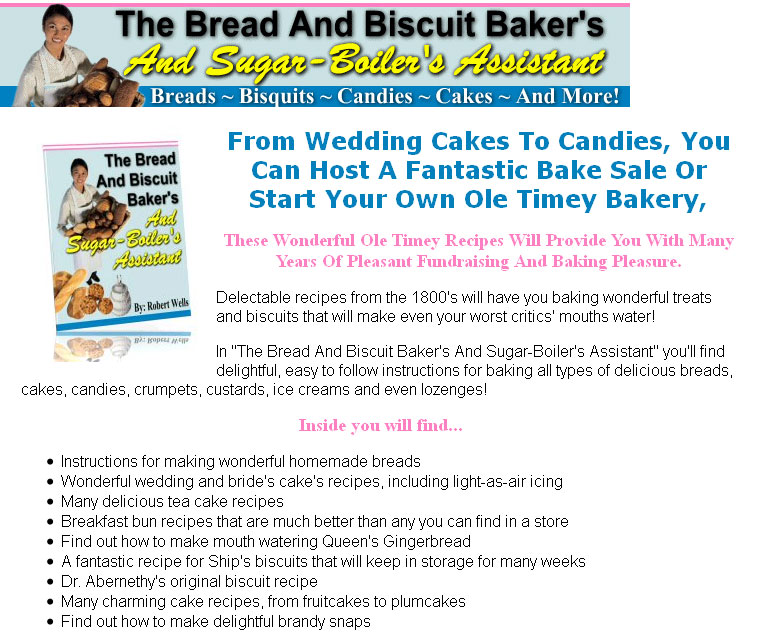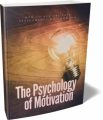Salespage Snapshot:

>>> Click Here To View Full Sales Page…
Table Of Contents
BREAD AND BISCUIT BAKING, ETC.
I. — INTRODUCTORY CHAPTER……………………………………….4
Slow Process in the Art of Bread-making Need of Technical Training Chemistry as applied to Bread-making.
Process of Fermentation.
Liebig on the Process of Bread-making Professors Jago and Graham on Brown Bread
II. — GENERAL REMARKS ON BAKING…………………………….11
Baking and its several Branches Essentials of good Bread-making German Yeast and Parisian Barm Recipe for American Patent Yeast. Judging between good and bad Flour Liebig on the Action of Alum in Bread Professor Vaughan on Adulteration with Alum Importance of good Butter to the Pastrycook.
Recipes
BREAD, TEA CAKES, BUNS, ETC……………………………………………….15
GINGERBREAD, PARKINGS, SHORTBREAD, ETC…………………………..27
HARD BISCUITS……………………………………………………………………32
FANCY BISCUITS, ALMONDS, Etc………………………………………………38
PASTRY, CUSTARDS, ETC………………………………………………………49
FRUIT CAKES, BRIDE CAKES, ETC…………………………………………….51
HANDY WHOLESALE RECIPES FOR SMALL MASTERS……………………59
The Sugar Boiler’s Assistant
CONFECTIONS IN SUGAR-BOlLING……………………………………………62
COLORING SUGAR………………………………………………………………..73
LOZENGES………………………………………………………………………….76
ICE CREAMS………………………………………………………………………..77
PRESERVING FRUITS…………………………………………………………….79
CHOCOLATE………………………………………………………………………..83
Sample Content Preview
THE BREAD AND BISCUIT BAKER’S ASSISTANT
I. INTRODUCTORY CHAPTER
When we reflect upon the present conditions under which the bread-making industry is carried on in most of the large cities and towns of England, Scotland, and Ireland, and remember the importance of that industry to mankind, we cannot but be impressed by the little progress that has been made in the art of bread-making. Whilst other industries have been marked by important improvements, we find bread being made in much the same manner as it was five hundred years ago. The mystery is how — by accident, it would seem — We get such well-made bread as we do. There are very few even now who have the slightest conception of what yeast really is, and fewer still who know how or why it makes bread light. But it will surprise me if the trade does not undergo, in the course of the next ten years, a complete and beneficial change.
Master bakers and confectioners are everywhere complaining of the incompetency of their workmen; and it cannot be denied that there is some ground for the complaint. Proper training in the baking and confectionery trade is of great importance. A trained servant gives satisfaction to his employer, and receives a responsive good feeling in return.
Let us see what is meant by “training.” In its broadest and best sense, it is knowing what to do, and when and how to do it.
Take the first condition — What to do. This may be considered on two grounds, generally known as the practical and the theoretical, though the latter is sometimes confounded with the scientific, and people are led to sneer at science. Much has been said lately in our trade journals about introducing scientific chemistry to the journeyman baker in connection with his daily work of making bread. But how many journeyman bakers could we find that even understand the meaning of the word chemistry, without expecting them to understand mysteries to which years of study have been devoted by such men as Liebig, Graham, Dumas, Darwin, Pasteur, and Thorns of Alyth?
Other Details- 1 Ebook (PDF), 84 Pages
- 1 Salespage (HTML)
- Year Released/Circulated: 2008
- File Size: 463 KB














